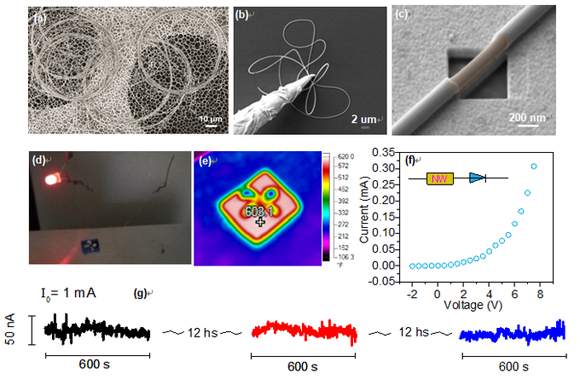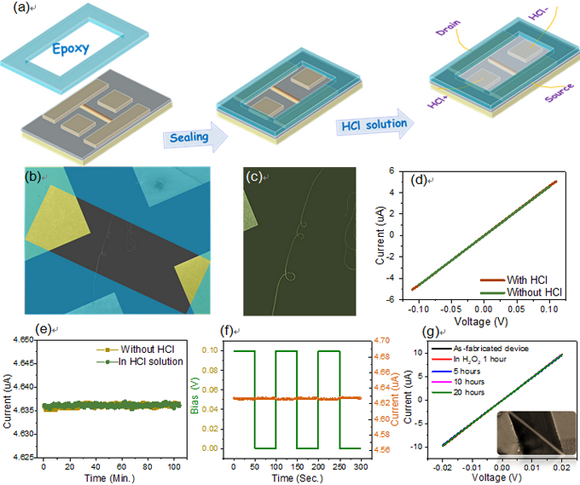Silicon-based electrical nanocables available at high-temperature, acidic and oxidizing environment
Source: School of Materials Science and Engineering
Written by: School of Materials Science and Engineering
Edited by: Tan Rongyu, Wang Dongmei
Prof. Chengxin Wang’s group at Sun Yat-sen University reported in Nat. Comm. (2020, 11, 1, 647) their recent research progress in nanoscale electrical interconnect, which was entitled with “Millimeters long super flexible Mn5Si3@SiO2 electrical nanocables applicable in harsh environments”.
Nanoscale electrical nanocables are important components in micro- and nano-electronic functional systems. Features like high conductivity, flexibility and physicochemical stability represent advantages in practical applications. Benefiting from their high conductivity and developed synthesis technology, metallic Ag, Cu and Au nanowires are mostly investigated. Unfortunately, they are far from the practical application as electrical nanocables. It is just like that a naked copper wire without coaxial rubber shell is unable to be used directly, due to safety reason and weak resistance to high temperature, oxidizing, acidic and humid environment. Therefore, dressing these nanowires with inert shell (i.e. silicon oxide and alumina) to isolate the electrical core from external surroundings is mandatory.

Fig. 1 (a) SEM image of the nanocable; (b) the flexibility investigation of a single unit; (c) the display of the core-shell configuration; (d) optical image of a red LED connected to a single nanocable at ~ 300℃; (e) the temperature mapping of the device in (d); (f) the I-V characteristic of the circuit; (g) the long-time availability investigation of the working nanocable at high temperature.
Metal silicide is another type of materials possessing outstanding conductivity, at the meanwhile exhibiting obviously better stability. Almost perfect Mn5Si3@SiO2 nanocables with millimeters length were synthesized. Both the insulating shell and electrical core displays very good uniformity (Fig. 1). A serial experiments were designed to evaluate the advantages of this structure as nanoscale interconnect, including basic electrical property (resistivity of 1.28 - 3.84×10-6 Ωm and maximum tolerable current density of 1.22 to 3.54×107 A cm-2), resistance to strong oxidizing (H2O2, 10%) and acidic environment (HCl, PH=1), anti-interference capability and I-V test in bended state, as in Fig. 2. All of these evaluation confirmed that Mn5Si3@SiO2 nanocables are sufficient as special nanoscale electrical interconnect. These advantages make it applicable in high temperature and high power device, even in corrosive environment. With good biocompatibility, it would be interesting if such a unit was used in bioelectronics field to explore the intracellular and intercellular actions, and considered for application in implantable bioelectronics. The outstanding flexibility and millimeters length make it promising as free-standing electrical interconnect in position adjustable micro and nanoscale functional systems, such as MEMS and nanoprobe systems.

Fig. 2 (a) Device fabrication scheme; (b) SEM image of the device; (c) a closer view of the conducting channel; (d) I-V characteristics with/without HCl solution; (e) the long-time electrical stability investigation in HCl solution; (f) Current evolution of the nanocable under interferential electric field; (g) I-V curves of the device after being treated with H2O2.
This work is financially supported by the “National Natural Science Foundation of China” and also largely supported by “State Key Laboratory of Optoelectric Materials and Technologies”.
Link to the paper: https://www.nature.com/articles/s41467-019-14244-5.pdf
